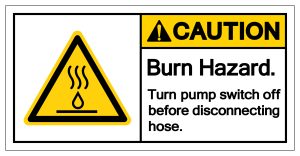Each year, 40,000 or so people in the US are hospitalized with burn injuries. The majority of adult women and children who sustain these burns do so at home or at work. However, adult men are more likely to be burned in work environments. The bottom line: burn injuries can happen to anyone.
Read on to learn more about this type of injury and how workers’ compensation benefits can help. Then contact PLBH at (800) 435-7542 for a free legal consultation.
Types of burns caused by the workplace
You run the danger of getting burned at work regardless of whether you work in a kitchen or outside in the sun. There are four primary forms of burns that happen at work:
- Thermal burns, possibly the most frequent type of burn, are brought on by the heat of hot items, open flames, liquids (scalds), and explosions.
- Chemical burns are caused by powerful acids, alkaloids, and/or other corrosive or caustic compounds coming into contact with the skin or eyes. These substances eat into the skin and tissue, resulting in chemical burns.
- Electrical burns are brought on by electrical currents, which create heat and damage as they pass through the body and come into contact with tissue.
- Sunburns or sun exposure burns are caused by the sun’s UV radiation, which can become hazardous with prolonged exposure.
Each of the aforementioned burn types is uncomfortable, but some burns are more serious than others. The severity of burn injuries is categorized.
Grading the severity of burns
Burns are categorized as first, second, third, or fourth degree depending on the extent of the damage to the skin and surrounding tissue, with fourth degree burns being the most severe. First-degree burns simply impact the epidermis. The area is typically irritated, uncomfortable, and dry.
Second-degree burns frequently result in blisters and penetrate deeper than the epidermis. The area may also develop blisters and develop severe pain and redness. The epidermis and dermis, the two outer layers of skin, are destroyed by third-degree burns. In some instances, the tissue beneath is also impacted. The area may look burned or white.
All layers of the skin are affected by fourth-degree burns, which also run the risk of hurting bones, muscles, and tendons. The burn site may need to be amputated in order to treat these severe burns.
Industries with a high rate of workplace burns
You might picture a restaurant when you think of open flames and hot grease in the workplace. But 15% of occupational burns, according to research from the National Center for Biotechnology Information, happened in the food service sector. Surprisingly, the manufacturing sector has a higher injury rate (29%) than other sectors.
In addition, burn injuries occur in construction firms (10%), chemical plants (9%), paper mills (4%), electric appliance companies (15%), the automotive sector (13%), and other industries (4%).
However, burns at paper mills accounted for the most serious wounds. Burns that happened in the food service industry tended to be lower in severity. In addition, occupational burns caused by hot water and grease were more frequent than other thermal burns, chemical burns, and electrical burns.
How to respond after getting burned at work
You could be exposed to heat, chemicals, electricity, and/or the sun wherever you work. You must submit a workers’ compensation claim as quickly as possible if you have sustained an on-the-job burn injury.
Please get in touch with PLBH for help if you have any inquiries about the procedure or if your claim has been delayed or rejected. You may benefit from your claim, comprehend your rights, and navigate the complicated workers’ compensation system with ease with the assistance of an experienced workplace accident attorney.

